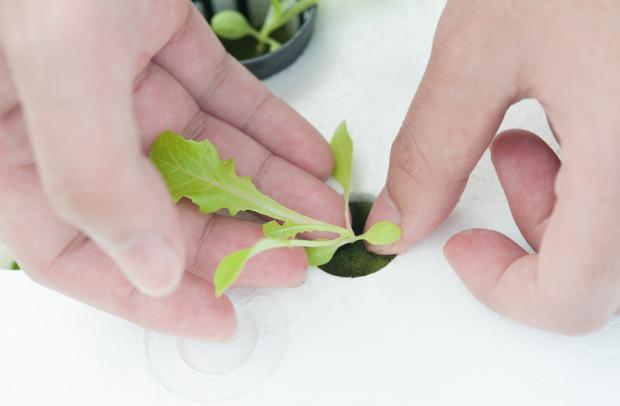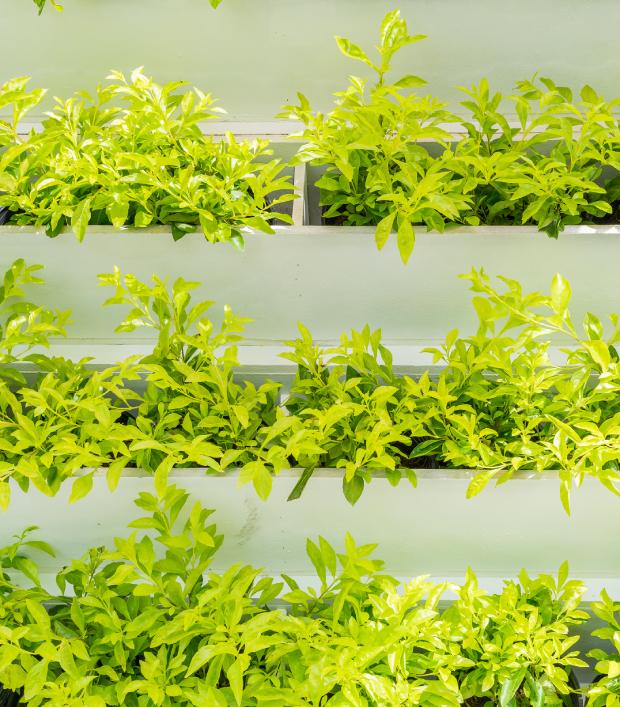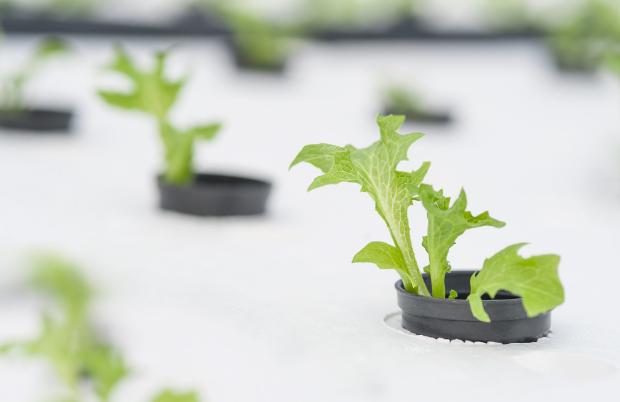Aeroponic cultivation is a soilless farming technique where plants grow with suspended roots receiving nutrients through misting.
How aeroponic cultivation works
Aeroponic cultivation is an advanced soilless farming technique in which plants grow with hanging roots in the air and receive nutrients through the nebulization of a solution rich in essential elements.
Instead of being immersed in a substrate or in water, as happens in hydroponics, the roots are exposed directly to the environment, allowing optimal absorption of oxygen.
Aeroponic cultivation, what it is and how it works – photo Getty Images
The nutrient solution is atomized in the form of microdrops, ensuring uniform distribution of the liquid nutrients to plants.
This system allows precise control of environmental factors, promotes accelerated growth and improves water use efficiency.
What’s more, aeroponic cultivation is ideal for applications indoor e vertical farmingmaking it a sustainable solution for urban agriculture and food production in controlled environments.
What is the difference between aeroponic and hydroponic cultivation
Aeroponic and hydroponic cultivation are both methodologies soilless agriculture but they have substantial differences in the way they provide water and nutrients to plants.
Nell’hydroponicsthe roots are immersed in a liquid nutrient solution or supported by an inert substrate such as perlite o coconut fibrewhich acts as a means of support.
The nutrient solution circulates constantly or periodically, ensuring the necessary supply of essential elements.
 Aeroponic cultivation of rocket – photo Getty Images
Aeroponic cultivation of rocket – photo Getty Images
On the contrary, inaeroponicaas already explained previously, the roots of the plants are suspended in the air inside sealed chambers and are sprayed with a fine nebulization of nutrients in the form of aerosols.
This method allows for greater absorption of oxygen directly from the roots, promoting faster and more vigorous growth.
Furthermore, aeroponics generally uses less water than hydroponics, thanks to the efficiency of the system nebulization and recycling of the nutrient solution.
Aeroponics vs Hydroponics
In terms of complexity, aeroponic systems require more advanced technology to maintain optimal environmental conditions and ensure precise nutrient delivery.
Hydroponic systems, despite being simpler to implement, may require greater quantities of water and constant monitoring of the nutrient solution to avoid imbalances.
Both techniques offer significant advantages over traditional farming, but the choice between aeroponica e hydroponics depends on factors such as available resources, technical expertise and production goals.
What can be grown in aeroponics
Aeroponic cultivation offers a wide range of possibilities for the production of different plant species; for example, it is particularly effective for farming leafy vegetables such as lettuce, spinach and rocket, thanks to the speed of growth and the superior quality of the final product.
Even the aromatic herbs such as basil, parsley and coriander benefit from this system, developing a more intense aroma and a greater concentration of essential oils.
 Aeroponic cultivation of lettuce – photo Getty Images
Aeroponic cultivation of lettuce – photo Getty Images
Furthermore, the aeroponic technique is suitable for the cultivation of fruit plants such as tomatoes, peppers and strawberries, which require precise control of nutrients and environmental conditions to maximize yield.
Someone specie tuberose like potatoes, they can be grown successfully, allowing constant monitoring of the development of the tubers and facilitating harvesting.
The flexibility of aeroponics also makes it ideal for scientific research and growing medicinal plants e rare speciesas it allows you to exactly replicate the optimal growth conditions.
Thanks to the absence of soil, the risk of soil-borne diseases is reduced, improving the healthiness of crops and decreasing the need for pesticides.
Vertical aeroponic cultivation
The vertical aeroponic cultivation represents an innovative application of aeroponics that maximizes the use of space through structures developed in height.
In this system, the plants are arranged up vertical modules or towers, with the roots suspended and enclosed in special chambers where they receive a fine nebulization of nutrient solution.
This configuration allows for the optimization of cultivable space, making it possible to produce a large number of plants in environments with limited surface areasuch as urban areas or small greenhouses.
The advantages of vertical aeroponic cultivation
Vertical aeroponics makes the most of resources, allowing significant savings water e nutrientsthanks to the efficient recirculation of the nutrient solution. Exposing the roots to the air promotes greater absorption of oxygen, accelerating plant metabolism and promoting faster and more vigorous growth of crops.
This system also allows precise control of environmental parameters such as temperature, humidity and lighting, often implemented with the help of sensors and advanced technologies to ensure optimal conditions.
 Vertical aeroponic cultivation – photo Getty Images
Vertical aeroponic cultivation – photo Getty Images
Vertical aeroponic cultivation is particularly suitable forurban agriculture and the vertical farmingoffering sustainable solutions for food production in metropolitan contexts.
Thanks to the reduction in the use of pesticides and the possibility of cultivating all year round regardless of external climatic conditions, this method contributes to improving the food safety and to reduce the environmental impact associated with the transport of agricultural products.
The combination of aeroponic techniques and design verticale represents a significant step towards more efficient, sustainable and future-oriented agriculture.
Do it yourself aeroponics
The creation of a system DIY aeroponics allows you to experiment with this advanced cultivation technique with a limited initial investment.
To build a home system, some fundamental components are needed: an opaque container to avoid the formation of algae, plant supports such as vasi retinatia high pressure pump e misting nozzles to create a very fine nourishing mist.
 DIY aeroponic cultivation – photo Getty Images
DIY aeroponic cultivation – photo Getty Images
The pump must be connected to a timer to regulate the spraying cycles, ensuring the roots have a constant supply of nutrients and oxygen.
It is essential to prepare one balanced nutrient solutionspecific to the needs of the cultivated plants, and regularly monitor the pH and electrical conductivity to ensure optimal growth conditions.
Assembling an aeroponic system requires attention to detail, such as sealing connections to prevent leaks and sterilizing components to avoid pathogen contamination.
Experimenting with DIY aeroponics offers the opportunity to fully understand the principles of this methodology and adapt the system to your needs.
In addition, it allows you to grow a variety of plants in small spaces, improving the efficiency and sustainability of home production fresh vegetables e aromatic herbs.
With proper maintenance and careful monitoring, a home aeroponic system can provide amazing results and help spread innovative agricultural practices.
Types of hydroponic systems
As previously mentioned, a hydroponic system it is a cultivation method that allows plants to grow without using soil, using an aqueous solution rich in essential nutrients.
There are different types of hydroponic systems, including:
- Deep water culture: the roots are permanently immersed in an oxygenated nutrient solution via aerators, ensuring a constant supply of oxygen and nutrients.
- Nutrient film technique: The nutrient solution continuously flows in a thin layer down a sloped channel, wetting the roots hanging in the channel.
- Ebb and flow systems: The substrate is periodically flooded with the nutrient solution and then drained, allowing the roots to absorb nutrients and oxygen in alternating cycles.
- Drip systems: the nutrient solution is distributed to the plants via drippers that slowly release the liquid at root level.
Effective operation of a hydroponic system requires careful monitoring of key parameters such as pH, the electrical conductivity and the temperature of the nutrient solution, to ensure that plants receive the optimal balance of nutrients.
 Home hydroponic cultivation – photo Getty Images
Home hydroponic cultivation – photo Getty Images
Additionally, adequate oxygenation of the solution is critical to prevent anaerobic conditions that could damage the roots.
By precisely controlling the growing environment, hydroponic systems can offer higher yields and faster growth than traditional farming practices, as well as reduce water consumption and pesticide use.
Source: www.lavorincasa.it


